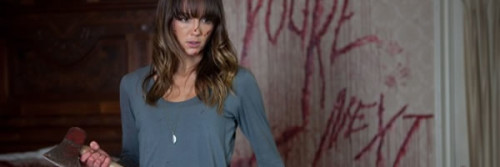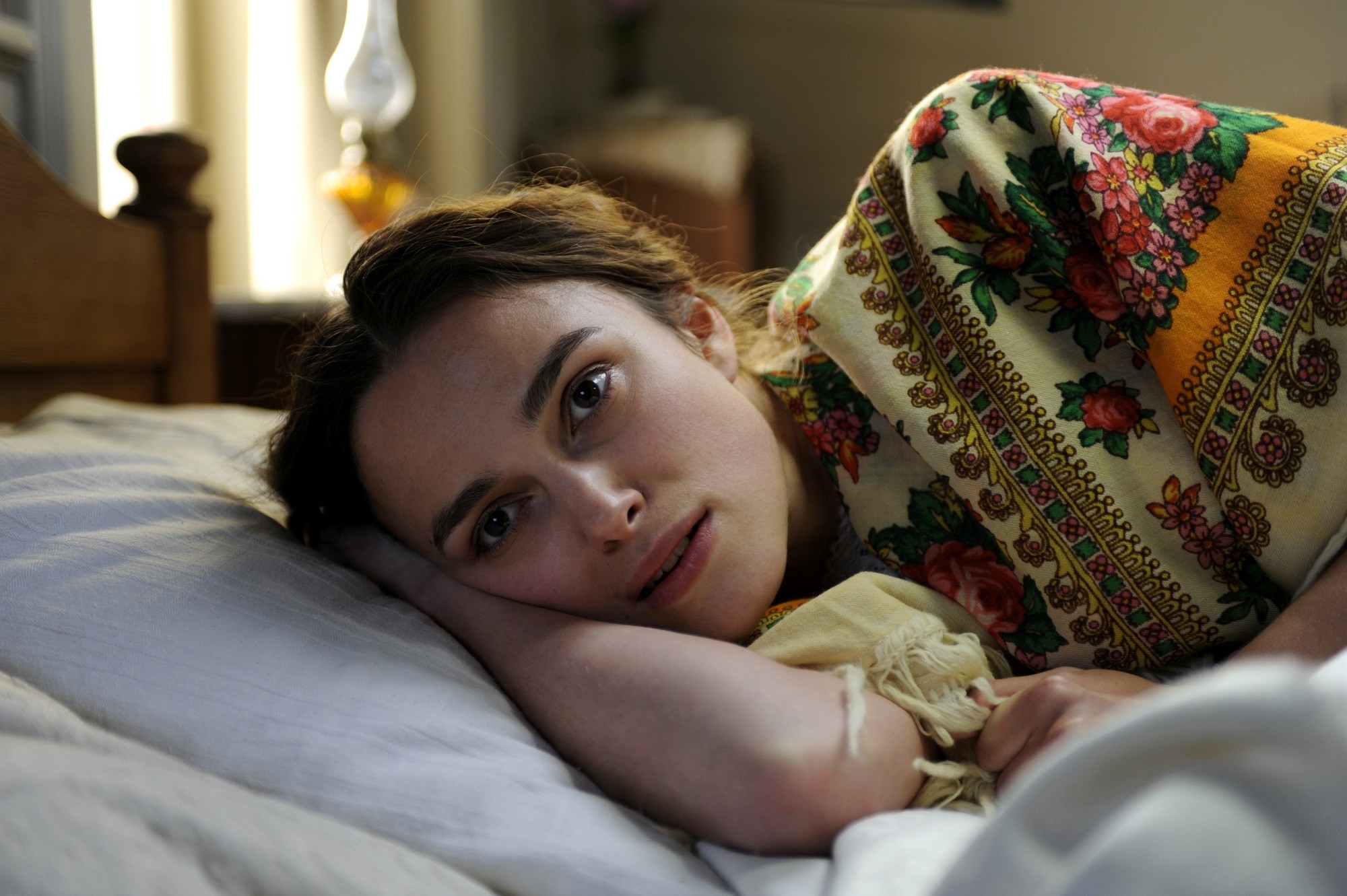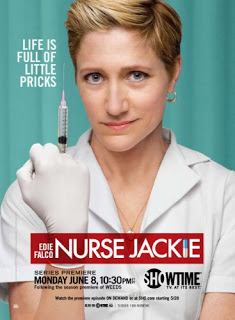
This guest post by BJ Colangelo previously appeared at her blog Day of the Woman and is cross-posted with permission.
It has been dissected time and time again on the way the horror genre has misrepresented women both on the screen and off, but whenever a film comes along and represents a female character as something different, we immediately bring praise to the filmmakers. While this practice is admittedly problematic, the only reason we stress the importance of these “strong female characters” is in large part due to the lack of positive female representation. The “weak” female character has proven to be a safe staple within the horror genre, and somewhat of a requirement in the slasher genre. Simply put, no one ever wants to do anything interesting. Witness Simon Barrett, Adam Wingard, Sharni Vinson, and the creation of You’re Next.

We’ve all seen the advertisements, a majority of us own those damn animal masks, and some of us horror geeks have giant boners for AJ Bowen and Barbara Crampton. You’re Next was the talk of the horror world, and the overall consensus is that the film kicks all sorts of ass. (It does, trust me.) People keep bringing up how You’re Next has taken the home-invasion sub-genre and spun it on its head. Most importantly, however, is the fact You’re Next may very well be one of the most empowering horror films for women, ever.
(NOTE: If you haven’t seen You’re Next, you need to 1. stop what you’re doing and see the film and 2. understand that this piece is an analysis and events of the film WILL be spoiled.)

Starting with the matriarch of the family, we have horror demi-goddess, Barbara Crampton as “Aubrey.” While this character on the surface seems to be following the trend of every other not-exactly-sober mother in a slasher film, Aubrey brings something that few other maternal horror figure has: heart. Aubrey is one of the most well-constructed mother characters because of her undeniable love for her family. Mothers in horror films are often seen as skeptical, heartless, drunk, or cruel. Aubrey is very protective of her family and showcases this throughout the entire film. She questions things when no one else will and despite the obvious dysfunction of her children, she dedicates herself to them just the same. What struck me as the most empowering, is the fact Aubrey actually mourns. Most horror movie mothers are seen as women flying off the handle with absolutely no control of their lives. They panic and make stupid decisions. Aubrey on the other hand realizes the situation at hand and mourns for her family. Her true dedication and love for her family is admirable, and unlike most of the mothers we see in horror films.

Aimee, the golden daughter of the family (played by Amy Seimetz) is one of the more minor characters and is killed off early because of it. The daddy’s girl and “princess” of the children appears to do no wrong. She is immediately shown as the least liked of the siblings, but the most adored by the parents. Her death brings out the strongest reaction from the parental units, but the weakest reaction from the rest of the family. Her good-girl persona seems to be something she uses to her advantage (overly excited introductions to other people, extreme affection towards her father) but is also something she desperately wants to rid out of her life (meet my starving artist/filmmaker boyfriend wearing the douchiest scarf this side of a Bright Eyes concert played by Ti West, TAKE THAT DAD!). However, she represents an ideal that a lot of women strive to possess. How do we treat ideals, ladies and germs? WE KILL THEM OFF AS QUICKLY AS POSSIBLE. Ideals are boring, one-dimensional, and unrealistic.

Wendy Glenn as “Zee” makes for an incredibly interesting female villain. Most female villains are seen as nothing more than pure evil, while Zee represents the true complexity of the female mind. Although she is originally viewed as an unenthusiastic familial girlfriend being dragged against her will to a gathering with her dysfunctional potential in-laws, we quickly discover her character is actually quite unique. It’s important to note that throughout the entire first 3/4 of the film, Zee is acting. She is playing into the roles assigned to her and does them effortlessly. Once the big twist is revealed, Zee is no longer the doting girlfriend. She is 100 percent handling her instincts and her motives. At this point, her boyfriend, Felix, is no longer her motivator. She has done her best to comfort him in his time of need, but her demands are her demands. She tries to seduce Felix while laying next to the corpse of his dead mother, and when he declines she responds, “You never want to do anything interesting.” While it may be a bit exaggerated, Zee stomps on the idea that women are not sexually aggressive and the idea that women aren’t as sexually creative as our male counterparts. Hate to out my lady friends, but women are just as big of perverts as men. Showing this sexually progressive woman was refreshing to see (even if her kink was a little TOO far for my comfort zone). This progressive attitude is thanked by being the only female character not murdered by an animal, but instead by her fellow woman.

The snobbish WASPy lover of Joe Swanberg, Kelly, is played beautifully by Margaret Laney. Kelly is the woman everyone knows and plays nice with even though they can’t stand her. Entitled, selfish, judgmental, and a total prude, Kelly represents that rich girl who lives off of Mommy and Daddy’s money and therefore feels like she’s better than everyone else. She completely hits the panic button when disaster strikes and runs purely off of emotion, a very stereotypically “girly” reaction to chaos. She also serves as the two-sided opposite to Zee and Erin. Zee and Erin both want what Kelly and Aimee have (money and an established life of stability). This is represented physically by the fact that both Kelly and Aimee wear their hair up (a symbol of a dignified and “put together” lady) while Zee and Erin don their hair down. Although, Kelly is not perfect as she DOES show the most skin of any of the characters in the film, and does pop pills. How is this woman thanked for her attitude? The judgmental bitch is thrown like a stone in a glass house — through a glass window.

Most obviously, we were given the most bad-ass final girl this side of Nancy Thompson. Sharni Vinson’s “Erin” ushered in an entirely new form of female final girls. Unlike the virginal final girls that only survived because they fell into the trope of being pure and exactly what society wants women to be (sexually attainable without having sex), Erin was a strong-willed female character capable of defending herself using a combination of beauty, brains, and brawn. She remains cool and collected when necessary but not without the guts to completely bludgeon to death anyone that crosses her. With the booby trap preparation skills that would make Kevin McAllister proud, Erin understands that in this life, you’ve got to take care of yourself.
Erin is never once dressed scantily (not that there’s anything wrong with that) and she’s never over-sexualized. She’s merely your everyday woman living the way she chooses. She’s progressive in that she left a TA position (meaning, this is where her mentioned student loans are coming from as this would forfeit any scholarship) to be with the professor she had fallen in love with. Whether or not Barrett made this intentional, there’s also a remarkable feminist analysis of Erin’s strength.
*I’m about to put on a psychoanalytical/psychosexual hat, you’ve been warned.* Erin is a female fighting a bunch of male animals with incredibly phallic weapons. In the Animal Kingdom, the alpha male is always seen as a dominant and physically aggressive creature while the alpha female is important for breeding purposes. Erin completely changes the game. Her male animal attackers are shooting arrows at her (reminiscent of the way animals “mark their territory” and determine things to be off-limits to other animals) or trying to insert overly long phallic machetes (hurray for wiener imagery) into her body. 99.99 percent of the time, female horror victims express pains in sounds that resemble an orgasm. Erin expresses pain with barbaric wails or subdued sounds of pain; never once does she sound post-coital. This simple action shows that Erin is a woman that is not defined by the male sexuality, but secure in her own identity. *Takes off psychoanalytical/psychosexual hat.*
The “strong female lead” we were promised with the Evil Dead remake and didn’t get was hand delivered on a silver platter in the form of Sharni Vinson. Kudos, Barrett/Wingard. You hit one out of the park for women in horror.
YOU’RE NEXT PASSES THE BECHDEL TEST. HOLY MOTHER OF GOD.
BJ Colangelo is the woman behind the keyboard for Day of the Woman: A blog for the feminine side of fear and a contributing writer for Icons of Fright. She’s been published in books, magazines, numerous online publications, all while frantically applying for day jobs. She’s a recovering former child beauty queen and a die-hard horror fanatic. You can follow her on Twitter at @BJColangelo.










